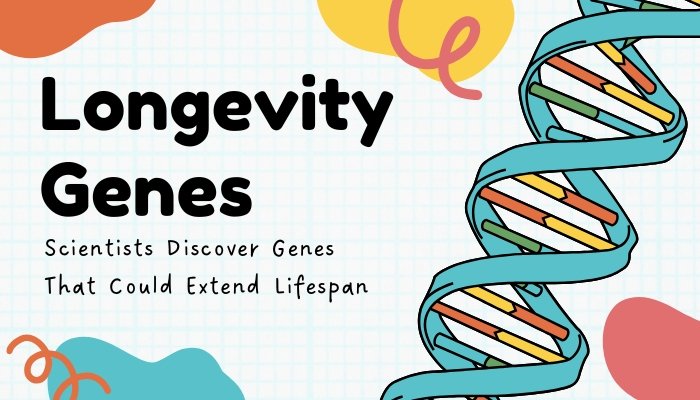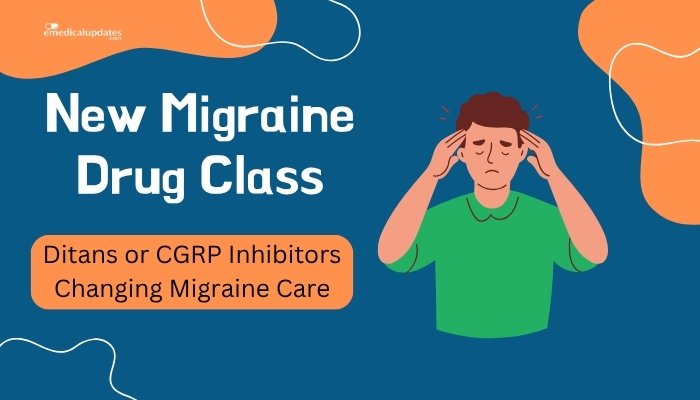Introduction
Breast cancer is one of the most common cancers among women worldwide. Mammograms—a type of X-ray of the breast—have long been a first-line measure to detect early tumors before they grow large. Regular screening has helped reduce mortality and improve survival. Still, mammogram interpretation can be complicated.

Factors such as dense breast tissue, overlapping structures, or variations in radiologists’ experiences can lead to overlooked abnormalities or false positives. These challenges have fueled interest in using artificial intelligence (AI) to improve accuracy, limit human error, and expedite breast cancer detection.
AI-based tools process large data sets to detect subtle signs of cancer that might be unnoticed in the human eye. Many systems now apply deep learning models, a subset of machine learning, to evaluate mammograms for suspicious patterns.
Early findings suggest that integrating AI into clinical workflows can spot potential tumors more reliably and reduce unnecessary follow-up procedures. This is especially important for preventing missed cancers and easing stress for women who might otherwise undergo extra testing or biopsies.
This article looks at the basics of AI-driven mammogram analysis, how these systems function, and the potential impact on breast cancer management. It explains current research, discusses ethical considerations, and outlines what might come next for AI-based mammogram interpretation. By the end, readers will gain a broad understanding of how artificial intelligence can transform breast cancer detection and improve outcomes for many women.
The Importance of Early Detection
Why Early Screening Matters
Early detection of breast cancer is critical. Smaller tumors confined to the breast are more amenable to surgery or targeted treatments. When cancer spreads to lymph nodes or distant organs, therapy becomes more complicated, and survival rates drop. Mammograms detect lesions up to two years before they can be felt during a physical exam, which is crucial for prompt intervention.
Key benefits of early detection:
- Higher Survival: A smaller tumor confined to the breast has a greater response to treatment, leading to better survival.
- Less Treatment Complexity: Smaller localized cancers may only need surgery or targeted therapies, rather than extensive chemotherapy or radiation.
- Improved Quality of Life: Shorter treatment times and fewer complications allow women to return to normal life earlier.
Drawbacks of Conventional Mammograms
Despite their importance, mammograms have inherent shortcomings:
- False Positives: Results flagged as suspicious can lead to anxiety, repeat imaging, and invasive biopsies that later prove benign.
- False Negatives: Dense tissue or subtle tumors can hide, causing missed cancers that later appear at a more advanced stage.
- Variations in Expertise: Different radiologists may read images differently based on their experience, fatigue, or bias.
These challenges drive the need for better, faster, and more standardized imaging review. Radiologists can interpret large volumes of images, but subtle anomalies or borderline findings are sometimes missed. AI can help fill this gap.
Basics of AI in Breast Imaging
Defining AI and Machine Learning
Artificial intelligence refers to algorithms that simulate human intelligence in tasks such as visual recognition, decision-making, or natural language processing. Machine learning, a subset of AI, uses statistical methods to identify patterns in data and make predictions. Through “training” on labeled examples, machine learning models refine their rules to improve accuracy.
Within machine learning, deep learning leverages layers of artificial neural networks to process complex data. Each layer extracts specific features, allowing the network to learn high-level patterns. In mammography, these features might include shapes, edges, or densities indicative of tumors.
Application to Mammograms
To train an AI system for breast imaging, large mammogram data sets are collected, each labeled with outcomes (benign, malignant, or likely malignant). The AI analyzes pixel information in these images to learn which characteristics correlate with true cancers. Once trained, the model can evaluate new, unseen mammograms and produce a cancer likelihood score, highlight suspicious areas, or make recommendations for further diagnostic steps.
Key tasks AI can perform in breast imaging:
- Lesion Detection: Identifies suspicious areas or calcifications for radiologists’ attention.
- Lesion Classification: Distinguishes benign lesions from malignant ones with high confidence.
- Density Assessment: Automatically measures breast tissue density, which is a risk factor for developing cancer.
- Triage: Sorts mammograms into different urgency levels, ensuring that high-risk images receive priority in reading queues.
Many AI systems aim to supplement radiologists’ expertise by flagging potential cancers. This allows radiologists to concentrate on fewer, more concerning areas, potentially boosting overall efficiency and diagnostic precision.
How AI Detects Early Breast Tumors
Feature Extraction in Mammograms
AI platforms interpret mammogram images differently from the human eye. Radiologists might focus on lumps, distorted architecture, or microcalcifications. An AI algorithm, however, deconstructs the image into many smaller elements, scanning for patterns in brightness, texture, or gradient changes.
During training, the AI collects a dictionary of features associated with positive cases. It learns that certain arrangements of pixel intensities correlate with malignant lesions, while others might appear normal. Modern methods can integrate data from multiple mammographic views, combining information from cranio-caudal and mediolateral-oblique images.
Identifying Subtle Signs
In some instances, a precancerous or early malignant process reveals minimal changes—a handful of microcalcifications or a tiny region with altered density. Human readers might overlook these minute features, especially in a busy clinical setting. AI systems can find these hints by comparing them to past labeled samples. This refined sensitivity can be pivotal in catching smaller lesions at an early stage, preventing advanced disease.
Key subtle signs include:
- Tiny Clusters of Calcifications: Some malignant lesions present as small flecks of calcium.
- Distorted Tissue: Malignant growth can twist normal architecture, causing slight lines or shapes.
- Minimal Asymmetry: A small difference in breast tissue that might imply something unusual on one side versus the other.
Combining with Additional Data
Some more advanced AI models incorporate clinical data—patient risk factors, family history, or past breast issues. By merging image-based insights with personal profiles, these models produce more thorough risk assessments. This might inform whether to recommend 3D mammography, MRI, or more frequent follow-ups for specific individuals.
AI Workflow in Clinical Settings
Stages of Implementation
AI can enter the mammogram reading process in different ways:
- Initial Triage: The AI flags mammograms likely to be negative, so radiologists can confirm quickly. This lets them devote more effort to complex cases.
- Concurrent Reading: The AI provides real-time feedback while the radiologist reviews images. Suspicious areas are highlighted, prompting the radiologist to study them more thoroughly.
- Second Opinion: Radiologists first read images independently. Then the AI result is revealed, allowing them to cross-check or reconsider borderline findings.
The chosen approach depends on local workflow preferences, technology resources, and the availability of radiologists. Some institutions might trust the AI to do a first pass, while others incorporate it as a “digital colleague” assisting in final decisions.
Reading Efficiency and Throughput
A big motivation for AI adoption is handling the ever-increasing demand for screening. Many facilities face limited radiologist staff while the number of recommended mammograms grows. By picking out mammograms likely free of cancer, AI can shorten the time radiologists spend on straightforward cases. This may lead to fewer backlogs, shorter patient wait times, and more focus on suspicious cases.
Additionally, AI-based triage might help in places with fewer specialized radiologists, ensuring suspicious mammograms are identified earlier. This could address geographic inequalities in breast cancer screening.
Radiologist Acceptance
Despite AI’s promise, some radiologists worry about potential over-reliance on algorithms or losing control of patient decisions. Clear guidelines and training can build trust. Many experts see AI as a supplemental tool—an extra set of eyes—rather than a standalone replacement. Clinical studies suggest that double reading by a radiologist and an AI system can match or exceed the performance of two radiologists reading together, though acceptance grows gradually with consistent proof.
Clinical Evidence and Accuracy
Sensitivity and Specificity Gains
Studies in multiple health systems have shown that AI can detect slightly more breast cancers at earlier stages compared to routine mammogram readings. A common benchmark is the recall rate, the fraction of women asked to return for additional imaging. An ideal system must find the majority of real cancers (high sensitivity) while keeping the recall rate for benign findings from skyrocketing (high specificity). Preliminary evidence suggests that well-trained AI models may identify more malignant lesions while not substantially increasing recall rates.
Real-World Trials
- Large Retrospective Analyses: In certain investigations involving thousands of archived mammograms, AI equaled or surpassed experienced radiologists in detecting true cancers. Some trials noted that AI cut false negatives by a measurable margin.
- Prospective Studies: Additional research tracks how AI fits into daily practices. AI read mammograms in parallel with the normal workflow, and results showed a drop in the workload for radiologists. Cancer detection improved slightly, with a moderate decline in false positives.
These findings are promising, but differences exist among AI models, training data, and population demographics. Achieving real-world success demands collaboration between technology vendors, imaging centers, and regulators.
Limitations in Performance
AI-based mammogram systems still struggle with:
- Dense Breasts: Overlapping structures can mask lesions, and AI might misinterpret normal dense tissue as suspicious.
- Unusual Presentation: Very rare tumor subtypes or atypical architectural distortions that deviate from the system’s training might not be recognized.
- Data Quality: The algorithm’s reliability is tied to the diversity and representativeness of its training sets. Poor image quality or differences in equipment can lower accuracy.
These performance gaps highlight the continuing value of human insight. Radiologists can integrate information from the patient’s prior images and overall history, refining the final decision.
Reducing False Positives and Unnecessary Biopsies
The Burden of False Alarms
A false-positive result can cause anxiety, emotional distress, and financial burdens for women. Follow-up imaging or biopsy can be uncomfortable and expensive. In some cases, repeat interventions show no malignancy, leading to relief but also to a loss of trust and added stress.
How AI Mitigates Over-Diagnosis
AI’s pattern recognition capability can help interpret borderline features more systematically. By referencing a massive database of historical images, an AI tool might clarify that a particular cluster of calcifications or shadow is benign. This extra confirmation can lower unnecessary call-backs while still preserving a high detection rate. Over time, as these systems gather more data, they might become even more adept at distinguishing benign and malignant changes with subtle differences.
Cost and Resource Savings
Fewer false positives translate to fewer secondary tests and biopsies, saving healthcare resources. Women also avoid further risk or discomfort. In public health settings, the cost advantage may be meaningful, allowing systems to reallocate funds to other patient needs.
AI in 3D Mammography (Digital Breast Tomosynthesis)
The Rise of Tomosynthesis
Digital breast tomosynthesis (DBT), or 3D mammography, creates cross-sectional images of the breast rather than a single 2D projection. DBT can enhance lesion detection, especially in women with denser tissue. However, DBT studies produce a large volume of images, expanding the time radiologists must spend in interpretation.
AI’s Role in 3D Imaging
AI proves useful in triaging and analyzing these extra images. By sorting or flagging only suspicious “slices,” AI can reduce reading fatigue and enable radiologists to catch subtle cancers. Research shows that, with proper training, AI can maintain or improve detection rates while lowering reading times for 3D mammography. This synergy between advanced imaging and advanced analytics may become an important step in next-generation breast cancer screening.
Ongoing Research
Some centers are investigating “synthetic 2D” images derived from DBT, with AI scanning these condensed images for suspicious signs. Others explore direct AI analysis of the raw 3D data. In either case, the goals are similar: detect cancer sooner, lower false positives, and let clinicians manage their workload more effectively. Overcoming the technical demands of large data volumes is a challenge, but consistent progress is reported.
Integration of Ultrasound and MRI
AI Beyond Mammograms
In addition to mammograms, doctors use ultrasound or magnetic resonance imaging (MRI) to further assess suspicious areas or screen women with higher risk. Dense breasts can limit mammography’s sensitivity, so ultrasound or MRI can be added. AI algorithms are emerging to evaluate these imaging modalities as well, potentially detecting subtle features in 3D ultrasound data or dynamic contrast-enhanced MRI sequences.
Combined Modalities for Better Accuracy
In the future, integrated AI platforms may compile data from different breast imaging tests along with patient risk factors. A single, comprehensive output could highlight the most pressing findings. This multi-modal approach might reduce the chance of missed lesions and offer personalized risk evaluations for each woman.
Ethical and Legal Considerations
Data Privacy
AI in mammography relies on large volumes of patient data to train and validate algorithms. Protecting sensitive medical images is paramount. Systems must follow strict privacy regulations and ensure that images and personal details are de-identified or encrypted. Responsible stewardship of data fosters trust among patients and caregivers.
Transparency and Accountability
When AI systems make or support medical judgments, transparency about how these conclusions arose is essential. Radiologists and patients need to know how much weight to place on AI suggestions. If an incorrect assessment occurs, legal frameworks must define liability.
Developers must also consider biases that could be embedded in training data sets. If an AI system is mainly trained on images from certain demographics, it might perform less effectively in other populations. Ongoing checks for fairness are crucial to maintaining equitable care.
Radiologist Oversight
Regulatory bodies commonly position AI as a tool aiding clinical decisions rather than a stand-alone solution. Radiologists must remain directly involved to interpret results in context. Over time, as AI’s accuracy is proven, some routine cases may be delegated to partial automation. However, complex or high-risk findings will likely always require human clinical judgment.
Training and Standardization
Effective Model Training
AI models must be trained on balanced, high-quality image sets. This includes:
- Diverse Representations: Images from women of various ages, races, breast densities, and known outcomes.
- Consistent Labeling: Precise annotation by skilled radiologists, ensuring that malignant or benign regions are marked properly.
- Large Data Volume: Thousands or hundreds of thousands of mammograms to capture the variety of normal and abnormal patterns.
Collaborations between academic hospitals, imaging device manufacturers, and technology firms help pool large data sets. This is vital to make sure that AI can generalize well to real clinical scenarios.
Validation Across Populations
Independent validation on external cohorts is also necessary. A model trained in one hospital might not yield the same accuracy in another region with different imaging protocols. Rigorous external testing can highlight pitfalls and refine the algorithm.
Regulatory Approval
In many regions, medical devices incorporating AI must undergo regulatory assessment to ensure safety and efficacy. Clear evidence from controlled trials is usually required. Guidelines differ worldwide, but the ultimate aim is consistent performance in daily clinical practice. This process can take time but is essential for maintaining patient trust.
Patient Perspective on AI
Accepting AI in Breast Screening
Most women are accustomed to the idea of advanced technology in healthcare. However, some might be uneasy knowing an algorithm influences their breast cancer screening outcomes. Public education is helpful, explaining that AI is an extra layer of protection rather than a substitute for medical oversight.
Anxiety and Communication
If the AI flags a finding, women may worry that the system sees something serious. Radiology teams should communicate results calmly, clarifying that many flagged abnormalities prove noncancerous and that thorough evaluation is standard practice. Good communication can build confidence that the combination of AI and radiologist expertise is in the patient’s best interest.
Benefits for Patients
- Earlier Tumor Detection: This leads to better survival odds and simpler treatments.
- Lower False Positives: Reduced number of anxiety-inducing recalls and biopsies.
- Faster Turnaround: Shorter wait times for results, since AI can expedite reading.
Women who learn about these advantages are often more open to AI-based mammogram analysis. This acceptance is crucial for a smooth rollout of new technology.
Practical Challenges in AI Adoption
Technical Infrastructure
Implementing AI in a busy radiology department requires:
- High-Performance Hardware: GPUs or advanced processors to handle large image data sets.
- Seamless Software Integration: AI tools must interact well with existing picture archiving and communication systems (PACS).
- Cloud vs. Local Solutions: Institutions decide if data is stored on-premises or via secure remote servers, each carrying cost and security implications.
Small community hospitals or clinics may lack these resources, which could widen a gap in care access. Collaboration with technology partners can help address these barriers.
Cost Analysis
Hospitals must weigh the cost of purchasing or licensing AI solutions against expected benefits. Costs might include software subscriptions, hardware, and staff training. In the long run, AI can generate savings if it cuts repeated procedures and time spent on normal exams. Yet up-front expenses may limit early adoption.
Maintenance and Updates
AI models benefit from ongoing updates, reflecting new knowledge or image sets. Regular software revisions can refine performance and ensure relevance. Clinical sites need a plan for continuous calibration and quality checks. Radiology staff must also stay current on improvements, ensuring that any changes in the AI workflow align with best practices.
Future Directions
Personalized Screening Schedules
AI may allow flexible screening intervals. Women at low risk, verified by repeated negative AI-assisted mammograms, might safely extend the gap between screenings. High-risk women might need shorter intervals, MRI, or advanced imaging. This personalized approach could enhance resource allocation while still preserving safety.
Integration with Genetic Testing
In some cases, a woman has known mutations such as BRCA1/2 that place her at a high risk of breast cancer. AI-based mammogram tools might incorporate this genetic data, intensifying scrutiny for suspicious features. Over time, multi-omics approaches that combine genetic, proteomic, or metabolic data could refine risk predictions and highlight early changes.
Automated Biopsy Guidance
Researchers are exploring using AI to guide biopsy procedures in real time. After identifying suspicious tissue on imaging, the system could propose an optimal approach for tissue sampling. This could reduce sampling errors and ensure that the pathology results accurately match the suspicious region.
AI as a Standard of Care
As evidence accumulates, it is conceivable that AI augmentation of mammogram reading will become the norm. Medical associations may update guidelines to recommend AI as a standard second reader, especially where double reading by two radiologists is not feasible. Over the next decade, AI-based screening protocols might be widely adopted.
Myth vs. Reality
“AI Will Replace Radiologists”
This belief is widespread but currently unsupported. While AI excels at pattern recognition, radiologists handle a broader scope, including correlating imaging findings with clinical context, advising about biopsy or surgery, and guiding complex decisions. AI might lighten radiologists’ workloads, but their role remains essential for final interpretation and for explaining results to patients.
“AI Is Always Right”
AI performance depends on the data used for training. Biased or incomplete data sets create blind spots. No algorithm is correct 100% of the time. Continued oversight and performance monitoring remain crucial, and updates must refine weaknesses as they appear.
“AI Ignores Patient Factors”
Some AI solutions incorporate patient-level data, from risk histories to genetic predispositions. Over time, the integration of multiple data sources is likely to expand. For now, radiologists often add the nuanced knowledge of a patient’s medical background that is not captured in the AI’s feature extraction.
Potential Global Impact
Addressing Radiologist Shortages
Many regions face a lack of radiologists specialized in breast imaging. AI could reduce the burden on the few existing experts, allowing them to handle more mammograms efficiently. This could be especially valuable in remote or resource-limited settings, where reliance on traveling specialists causes delays in reading times.
Uniformity in Quality
In places where screening programs vary, AI might bring a more uniform standard. An algorithm that has proven robust in multiple settings can deliver consistent performance. This uniformity can help reduce disparities in breast cancer detection rates, contributing to fairer healthcare outcomes across communities.
Conclusion
Artificial intelligence is reshaping mammogram-based screening and promises a more precise, efficient approach to breast cancer detection. By analyzing image features beyond human capabilities, AI systems can highlight subtle tumors early and assist in distinguishing true malignancies from benign findings. This extra layer of analysis can reduce false negatives, spare women from unnecessary follow-up tests, and give radiologists more time to handle complex diagnoses.
Challenges remain. AI tools must adapt to a range of imaging variations, ensure data privacy, and maintain fairness in diverse populations. Radiologists also need a defined framework to oversee AI outputs, balancing technology’s strengths with clinical expertise. While initial costs and technical infrastructure can pose hurdles, improved accuracy and fewer repeat procedures could offset these expenses over time.
Looking ahead, the integration of AI with 3D mammography, ultrasound, MRI, and personalized risk assessments can strengthen breast cancer screening programs. We may see new standards of care in which AI acts as a routine second reader, significantly enhancing detection. Ongoing trials are clarifying best practices for combining AI-based screening with established workflows.
For women, the ultimate benefit is earlier detection of treatable tumors, reduced stress from false alarms, and a more personalized approach to their breast health. As artificial intelligence continues to evolve, mammograms augmented by deep learning are on track to transform how clinicians diagnose and monitor breast cancer. With thoughtful implementation and continual progress, AI stands to make a meaningful difference in saving lives and improving long-term outcomes.
References
-
Tabár L, Vitak B, Chen TH. Swedish two-county trial: Impact of mammographic screening on breast cancer mortality at 29-year follow-up.
-
American Cancer Society. Breast cancer facts & figures.
-
Le EPV, Wang Y, Huang Y, Hickman S, Gilbert FJ. Artificial intelligence in breast imaging.
-
McKinney SM, Sieniek M, Godbole V. International evaluation of an AI system for breast cancer screening.
-
Yala A, Lehman C, Schuster T. A deep learning model to triage screening mammograms.
-
Kooi T, Litjens G, van Ginneken B. Large scale deep learning for computer aided detection of mammographic lesions.
-
Rodríguez-Ruiz A, Lång K, Gubern-Mérida A. Stand-alone AI for breast cancer detection in mammography.
-
Geras KJ, Mann RM, Moy L. Artificial intelligence for mammography and digital breast tomosynthesis.
-
Houssami N, Kirkpatrick-Jones G, Noguchi N, Lee CI. Artificial intelligence (AI) for the management of breast cancer.
-
Lehman CD, Wellman RD, Buist DSM. Diagnostic accuracy of digital screening mammography with and without computer-aided detection.
-
Sechopoulos I. Areview of breast tomosynthesis.
-
Rodriguez-Ruiz A, Krupinski E, Mordang JJ. Detection of breast cancer with mammography: effect of an artificial intelligence support system.






